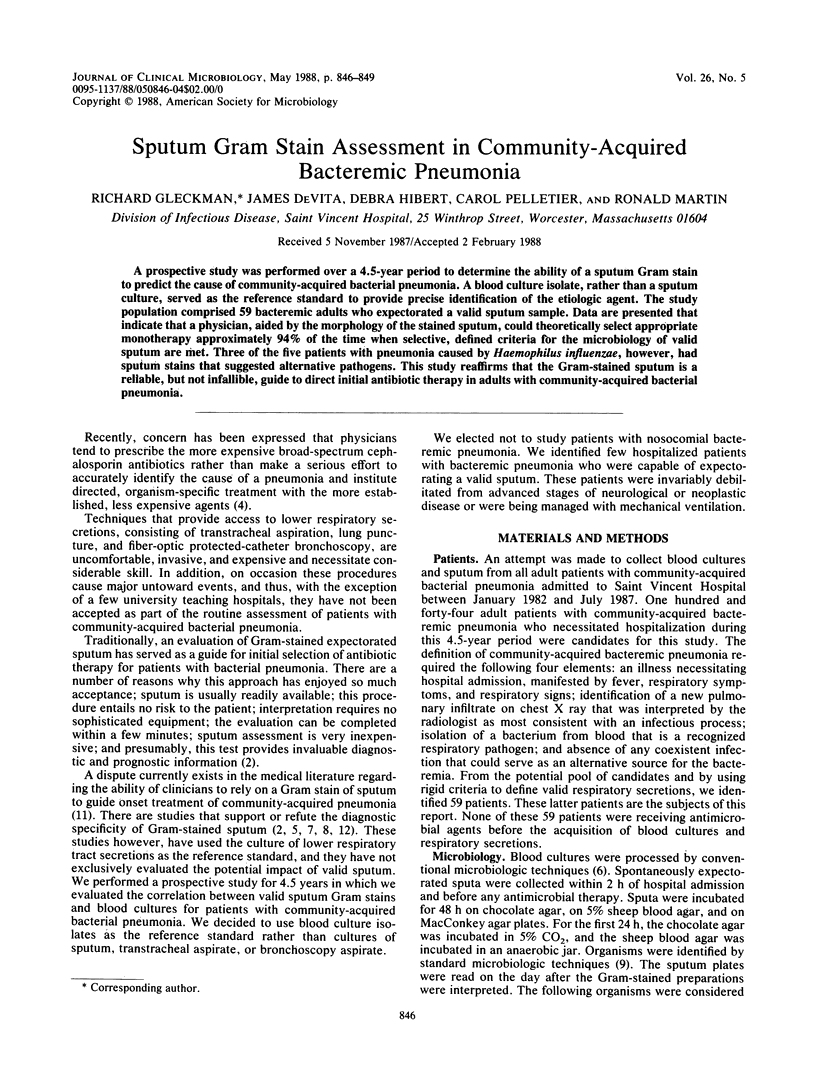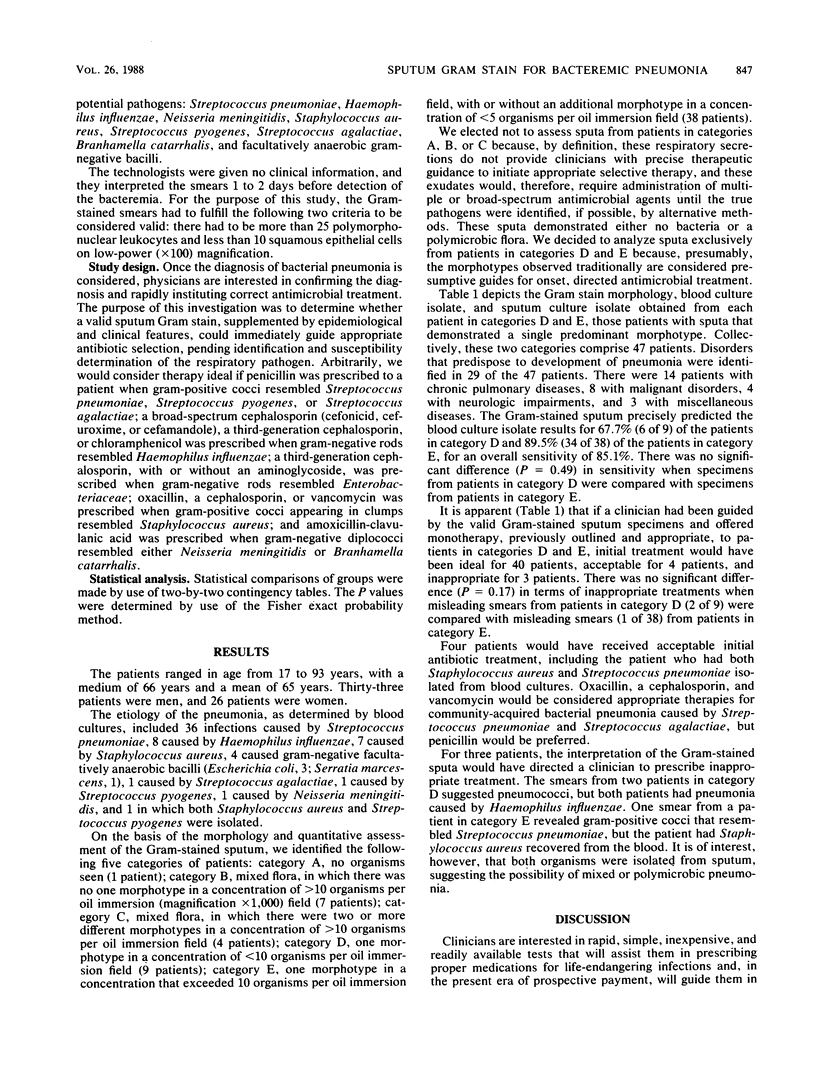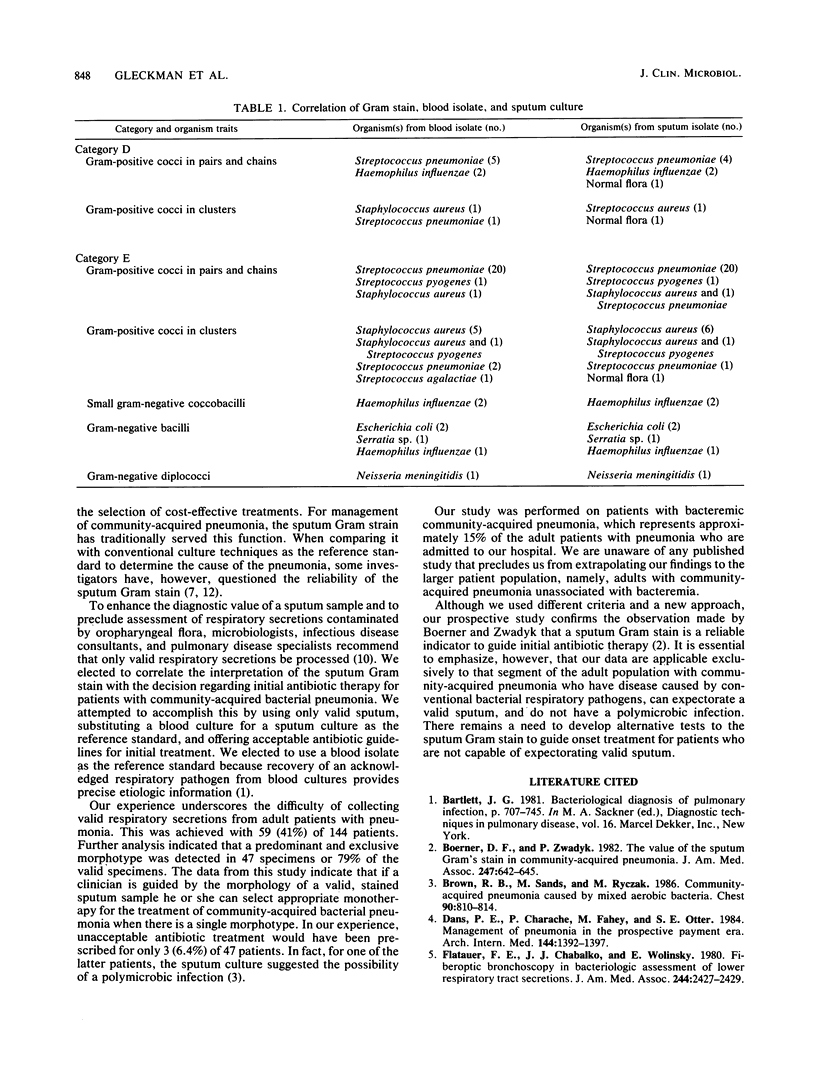Abstract
A prospective study was performed over a 4.5-year period to determine the ability of a sputum Gram stain to predict the cause of community-acquired bacterial pneumonia. A blood culture isolate, rather than a sputum culture, served as the reference standard to provide precise identification of the etiologic agent. The study population comprised 59 bacteremic adults who expectorated a valid sputum sample. Data are presented that indicate that a physician, aided by the morphology of the stained sputum, could theoretically select appropriate monotherapy approximately 94% of the time when selective, defined criteria for the microbiology of valid sputum are met. Three of the five patients with pneumonia caused by Haemophilus influenzae, however, had sputum stains that suggested alternative pathogens. This study reaffirms that the Gram-stained sputum is a reliable, but not infallible, guide to direct initial antibiotic therapy in adults with community-acquired bacterial pneumonia.
Full text
PDF



Selected References
These references are in PubMed. This may not be the complete list of references from this article.
- Boerner D. F., Zwadyk P. The value of the sputum gram's stain in community-acquired pneumonia. JAMA. 1982 Feb 5;247(5):642–645. [PubMed] [Google Scholar]
- Brown R. B., Sands M., Ryczak M. Community-acquired pneumonia caused by mixed aerobic bacteria. Chest. 1986 Dec;90(6):810–814. doi: 10.1378/chest.90.6.810. [DOI] [PubMed] [Google Scholar]
- Dans P. E., Charache P., Fahey M., Otter S. E. Management of pneumonia in the prospective payment era. A need for more clinician and support service interaction. Arch Intern Med. 1984 Jul;144(7):1392–1397. [PubMed] [Google Scholar]
- Flatauer F. E., Chabalko J. J., Wolinsky E. Fiberoptic bronchoscopy in bacteriologic assessment of lower respiratory tract secretions. Importance of microscopic examination. JAMA. 1980 Nov 28;244(21):2427–2429. [PubMed] [Google Scholar]
- Gleckman R., Hibert D. Afebrile bacteremia. A phenomenon in geriatric patients. JAMA. 1982 Sep 24;248(12):1478–1481. doi: 10.1001/jama.248.12.1478. [DOI] [PubMed] [Google Scholar]
- Hahn H. H., Beaty H. N. Transtracheal aspiration in the evaluation of patients with pneumonia. Ann Intern Med. 1970 Feb;72(2):183–187. doi: 10.7326/0003-4819-72-2-183. [DOI] [PubMed] [Google Scholar]
- Kalin M., Lindberg A. A., Tunevall G. Etiological diagnosis of bacterial pneumonia by gram stain and quantitative culture of expectorates. Leukocytes or alveolar macrophages as indicators of sample representativity. Scand J Infect Dis. 1983;15(2):153–160. doi: 10.3109/inf.1983.15.issue-2.05. [DOI] [PubMed] [Google Scholar]
- Murray P. R., Washington J. A. Microscopic and baceriologic analysis of expectorated sputum. Mayo Clin Proc. 1975 Jun;50(6):339–344. [PubMed] [Google Scholar]
- Pratter M. R., Irwin R. S. Clinical value of the Gram-stain smear of respiratory secretions. Chest. 1985 Aug;88(2):163–164. doi: 10.1378/chest.88.2.163. [DOI] [PubMed] [Google Scholar]
- Ries K., Levison M. E., Kaye D. Transtracheal aspiration in pulmonary infection. Arch Intern Med. 1974 Mar;133(3):453–458. [PubMed] [Google Scholar]


